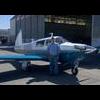Decending and Landing Mooney techniques
-
Members Online
- Rotorhead
- PT20J
- atpdave
- Stealth Mooney
- turbofan
- Jose Jo
- AndreiC
- TheBearFlies
- Bartman
- Rick Junkin
- ElkoRandy20J
- fsuflyer
- Dgeyer
- Buckeyechuck
- varlajo
- marcusku
- Yanyen
- redbaron1982
- bencpeters
- Guillaume
- BeeBuzzbee
- takair
- TNIndy
- ohdub
- AF M20J
- AJ88V
- Hank
- Aaviationist
- 0TreeLemur
- EarthboundMisfit
- M20F
- hbpil
- VetRepp
- mooneyflyfast
- hammdo
- Schllc
- LuisO


Recommended Posts
Join the conversation
You can post now and register later. If you have an account, sign in now to post with your account.